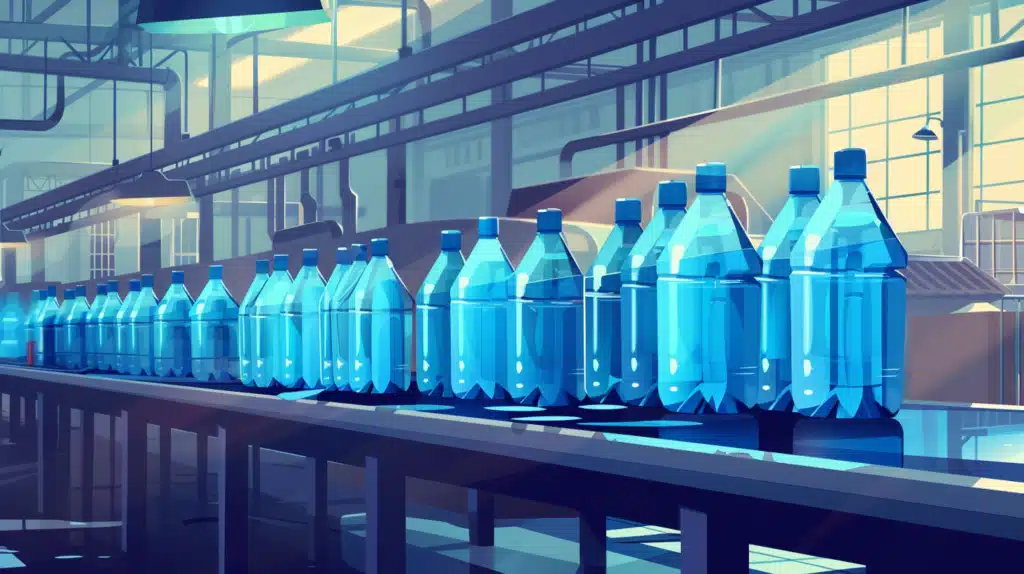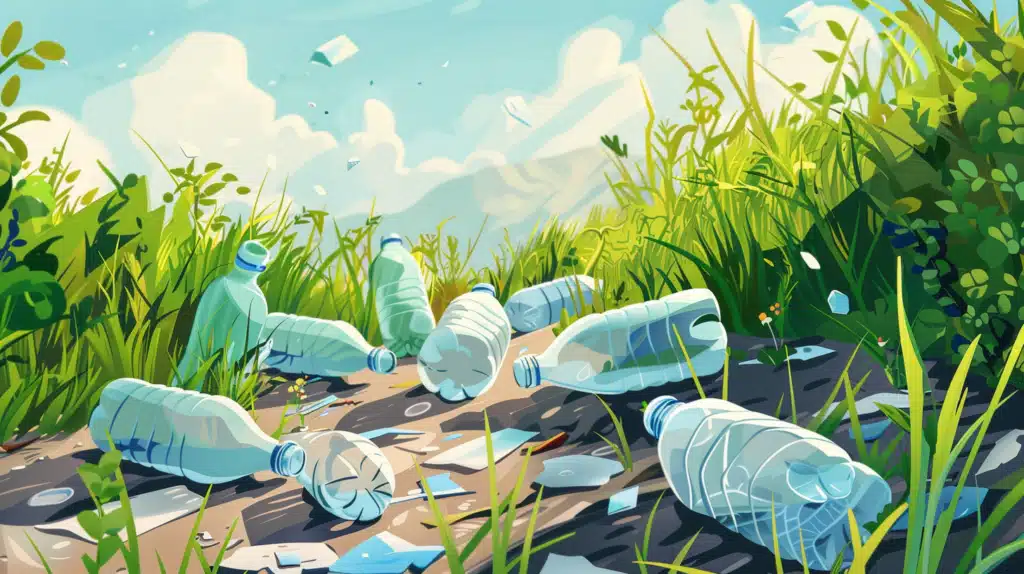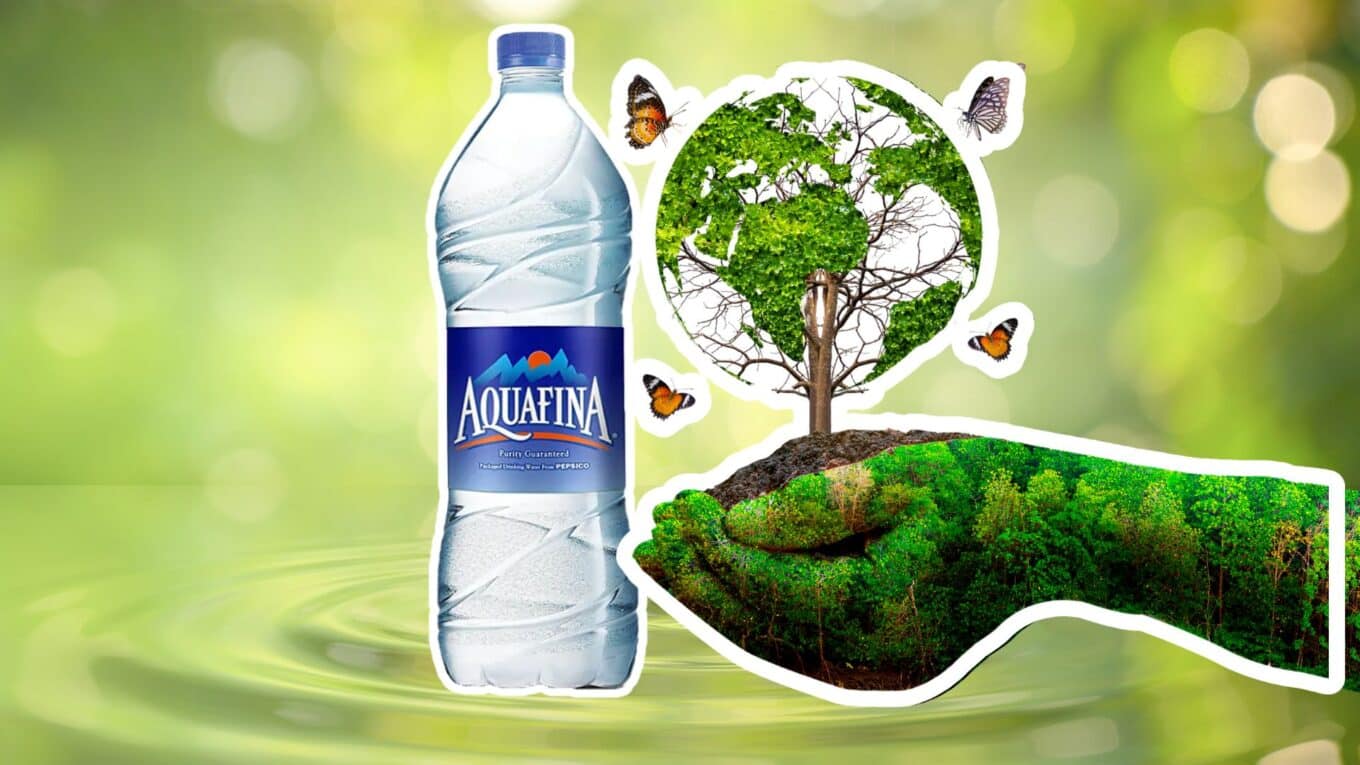In this blog post, we’ll look in-depth at the environmental impact of Aquafina’s bottled water production.
As one of the leading brands in the industry, Aquafina’s practices have far-reaching consequences for our planet.
We’ll examine the energy and water usage in their production process, the shipping costs and emissions associated with distribution, and the staggering amount of plastic waste their single-use bottles generate.
By the end, you’ll clearly understand the true cost of convenience regarding bottled water.
So, let’s dive in and explore how our thirst for packaged water affects the world around us.
What Is Aquafina as A Brand?
Aquafina, a brand of purified bottled water owned by PepsiCo, has become a household name and a major player in the global industry.
With a significant market share and widespread distribution, Aquafina has enjoyed tremendous success, reflecting the growing demand for convenient, portable drinking water.
However, as environmental concerns surrounding bottled water production have become more prominent, consumers and stakeholders are increasingly questioning Aquafina’s practices’ sustainability and the industry’s broader impact on the planet.
Brief of Production Process of Aquafina

Aquafina’s bottled water goes through a multi-step production process before reaching consumers.
Step 1: Water Sourcing
Aquafina sources its water from public water systems, which is then purified using a rigorous, multi-step process called HydRO-7.
This process includes reverse osmosis, ozonation, and other filtration techniques to remove impurities and ensure consistent taste and quality.
While Aquafina complies with regulations, concerns have been raised about the potential impact on local water resources, particularly in areas prone to drought or water scarcity.
Step 2: Packaging
Aquafina primarily uses PET (polyethylene terephthalate) plastic bottles, which are lightweight and durable but have significant environmental consequences.
The production of PET requires substantial energy and resources, and the low recycling rates of these bottles contribute to the global plastic waste crisis.
Aquafina has taken steps to reduce the amount of plastic used in its bottles and promote recycling, but the scale of the problem remains a challenge.
Environmental Impact of Aquafina
1. Plastic Waste

Aquafina’s reliance on single-use PET (polyethylene terephthalate) bottles contributes significantly to the global plastic waste crisis.
With millions of bottles sold yearly, a substantial portion of this plastic is in landfills, incinerators, or the natural environment.
PET bottles can take hundreds of years to decompose, accumulating microplastics in soil and water bodies.
This plastic pollution seriously threatens wildlife, marine ecosystems, and human health.
2. Water Consumption
Bottled water production is a water-intensive process, often requiring several liters of water to produce a single liter of the final product.
This includes water used in purification, equipment cleaning, and plastic packaging production.
In regions where Aquafina sources its water, this high consumption rate can stress local water resources, particularly in areas prone to drought or water scarcity.
It is essential to evaluate whether the water used in production is managed sustainably and whether the company is taking steps to minimize its water footprint.
3. Carbon Emissions
The carbon footprint of Aquafina’s bottled water production is substantial, stemming from multiple supply chain stages.
Water transportation from source to bottling facilities, then from facilities to retailers, relies heavily on fossil fuel-powered vehicles, resulting in significant greenhouse gas emissions.
The production of PET bottles also requires energy, often from non-renewable sources, further contributing to the product’s carbon footprint.
Additionally, the disposal of plastic waste through incineration releases carbon dioxide into the atmosphere.
Aquafina must invest in renewable energy, optimize transportation routes, and explore more sustainable packaging options to mitigate these impacts.
4. Ecosystem Disruption
Water sourcing for Aquafina’s production can have localized impacts on ecosystems, particularly when water is extracted from sensitive areas such as wetlands, springs, or groundwater reserves.
The depletion of these water sources can disrupt the balance of local ecosystems, affecting plant and animal life that depend on them.
Moreover, the improper disposal of plastic waste can lead to the ingestion of microplastics by marine life, causing harm to individual species and potentially disrupting entire food chains.
Aquafina must carefully assess the environmental impact of its water-sourcing practices and take steps to protect and restore affected ecosystems.
Sustainability Initiatives by Aquafina
Packaging Innovations
To address the environmental impact of its packaging, Aquafina has implemented several initiatives to reduce plastic waste.
The company has introduced lighter-weight bottles that use less plastic, helping to minimize the overall material footprint of its products.
Aquafina has also committed to using more recycled PET (rPET) in its bottles to reach 50% rPET content by 2025.
While these efforts are commendable, the company must continue to push for more sustainable packaging solutions, such as exploring bio-based materials or designing bottles for improved recyclability.
Water Management
As a major consumer of water resources, Aquafina is responsible for managing its water use sustainably.
The company has implemented water-saving strategies in its production facilities, such as optimizing cleaning processes and reusing water where possible.
Aquafina also claims to work with local municipalities to ensure its water sourcing does not strain local resources.
However, more transparency is needed regarding the company’s water management practices, including data on water consumption, wastewater treatment, and the impact on local water bodies.
Energy Efficiency
Aquafina has taken steps to improve energy efficiency throughout its operations to reduce its carbon footprint.
This includes investing in more efficient production equipment, optimizing transportation routes to minimize fuel consumption, and exploring renewable energy options.
The company has also set targets for reducing its greenhouse gas emissions, aiming for a 20% reduction by 2030 compared to a 2015 baseline.
While these initiatives are positive, Aquafina must accelerate its efforts to transition to renewable energy sources and set more ambitious emission reduction targets in line with global climate goals.
Focus on Recycling

Aquafina has recognized the importance of promoting recycling and educating consumers about properly disposing of its products.
The company participates in recycling initiatives and partnerships, such as the Every Bottle Back program, which aims to increase PET bottle recycling rates in the United States.
Aquafina also includes recycling information on its packaging and engages in consumer education campaigns to encourage responsible disposal.
However, the effectiveness of these efforts is limited by the lack of comprehensive recycling infrastructure in many regions and the low overall recycling rates for PET bottles.
Aquafina must work with other stakeholders to advocate for improved recycling systems and explore ways to incentivize consumer participation.
Conclusion
Aquafina’s bottled water production has a significant environmental impact, from the depletion of water resources and the generation of plastic waste to the emission of greenhouse gases during transportation.
As a major player in the industry, Aquafina must take responsibility for its ecological footprint and demonstrate a genuine commitment to sustainability.
Aquafina can work towards reducing its environmental impact by investing in innovative packaging solutions, implementing water conservation measures, and promoting consumer education.
However, achieving meaningful progress will require collaboration among all stakeholders, including consumers, policymakers, and industry leaders.
As we become increasingly aware of bottled water production’s pressing issues, we must make informed choices and advocate for a more sustainable future.
Together, we can build a world where convenience does not come at the cost of our planet’s well-being.




